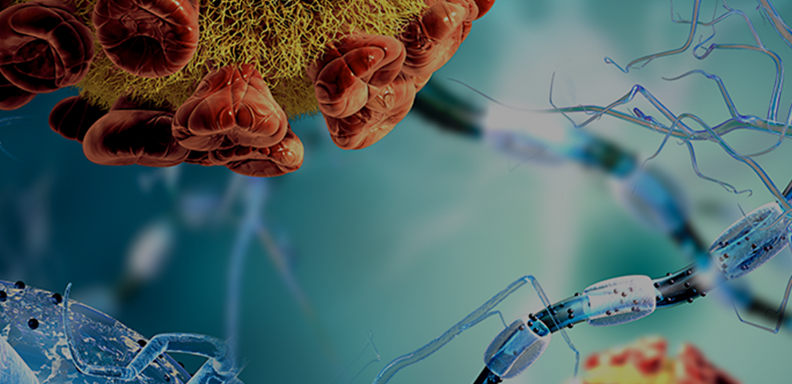The cellular response to heat has been scrutinized for decades to understand how diverse organisms evolved to cope with environmental stress. Condensation, the aggregation of proteins in response to high temperatures, is noted for its elusive role in this process.
Now in a recent Nature Communications publication, UChicago researchers have demonstrated that protein condensation in response to heat stress, widely believed to be harmful, is in fact an essential and highly coordinated behavior that is evolutionarily conserved across distinct organisms.
Hot on the trail of heat stress
Cellular proteins react to large increases in temperature by unfolding from their native forms and clumping together. Helper proteins known as chaperones are deployed simultaneously, seemingly to limit further unfolding and aggregation and to restore homeostasis after mass protein damage. This series of events, known as heat shock response, has been studied widely to understand how eukaryotic cells adapt to big changes in their environment, i.e., stress.
The term “heat stress” carries an intuitively negative connotation. This undertone isn’t helped by human conflicts with heat—global warming, fever, or even sunburn may come to mind. Disorders characterized by aggregation of proteins, Alzheimer’s disease, for example, only contribute to this reputation.
But what if temperature were viewed in a different light? What if cells interpreted heat not as a raging wildfire, but as a cue for a finely tuned biological system?
“You can't blame people for thinking that condensation is a negative response, that it’s just a trash pile”, said first author Samantha Keyport Kik, PhD a former member of the D. Allan Drummond lab at the University of Chicago. “We, for many reasons, had a hypothesis that it's not deleterious.”
The Drummond lab has spent years demonstrating that protein condensation is not nearly as damaging to the cell as previously thought. In fact, the work of their group and several others now suggests that specific proteins are capable of sensing and responding to changes in temperature. Further evidence suggests that condensation is an adaptive process regulated by chaperone proteins.
Despite these findings, some outstanding questions remained. If heat-induced condensation is truly crucial for eukaryotic cell fitness, wouldn’t we expect to observe these protein structures universally— in distantly related cold-loving and heat-loving organisms alike?
“Nobody had done a proper comparison to demonstrate whether any of these condensate structures were formally evolutionarily conserved. So, we set out to do that,” Drummond said.
To address this, Keyport Kik chose three species of yeast that had evolved to grow in distinct temperature ranges: Saccharomyces kudriavzevii, Saccharomyces cerevisiae, Kluyveromyces marxianus, which grow at 24-28 °C, 30-34 °C, and as great as 45 °C, respectively.
First, the researchers used a combination of fluorescent reporter proteins and gene expression analysis to monitor the heat shock responses among the three species. As expected, the temperature at which heat shock proteins were induced was tightly linked to each species’ optimal growth temperature.
Next, Keyport Kik asked if the identities of the proteins that condensed were the same among the distinct yeast species. A group of quick-clumping proteins previously identified by the lab, nicknamed “superaggregators”, were found universally in the heat shock response of each yeast. The superaggregators condensed at temperatures tuned to each species’ thermal niche, another clue that this process isn’t quite as random and detrimental as previously thought.
“We discovered that these structures are conserved in a very, very striking way,” Drummond said.
Protein aggregation in heat stress is essential and conserved
It was now apparent that the three yeast species had heat shock responses that were evolutionarily conserved and closely linked to their individual environments. But what is the source of this fine-tuning of temperature sensitivity?
Previous work in the Drummond lab hinted at the importance of Pab1, an essential protein that serves as a marker of stress induced clusters in heat shock response. It was found that a region called the P domain regulated condensation in response to temperature. This condensation didn’t require any other cellular machinery— it was encoded within the amino acid sequence itself.
The sequence of the P domain of Pab1 differs in heat-loving K. marxianus compared to S. kudriavzevii and S. cerevisiae. When researchers individually mutated amino acids in this region and then applied heat stress, they found that changes which increased hydrophobicity lowered the temperature threshold of condensation relative to each species’ wild type.
“This was a remarkable finding,” said Keyport Kik. “It speaks to the integration of all the responses— not only do they all happen, but they all happen in their own range.”
Evolutionary conservation generally points to a biological process being important for an organism’s fitness. But one experiment remained to prove this was true.
The ability of cells to return to homeostasis after prolonged heat stress is a crucial feature of heat shock response. Previous work demonstrated that in E.coli, Pab1 condensation was adaptive—preventing condensation prevented cell growth during prolonged heat stress. The researchers speculated that this behavior was evolutionarily conserved.
To test this hypothesis, Keyport Kik developed Pab1 mutants of S. kudriavzevii and S. cerevisiae. At their typical temperature niches, both strains grew normally. When the mutants were subjected to heat shock, S. kudriavzevii and S. cerevisiae experienced arrested cell growth that was not relieved until temperatures were returned to their optimal ranges. In other words, the fitness of these divergent organisms was dependent on their ability to form Pab1 condensates, indicating an evolutionarily conserved mechanism for dealing with heat stress.
Together, these results suggest that prevention of condensation hurts the ability of distinct organisms to grow at temperatures above their optimal ranges— a fresh take on a cell response once considered detrimental.
Looking forward
This paper is the first to describe adaptive heat stress condensation across multiple species. Moving forward, the Drummond lab seeks to understand why this adaptive process exists, and how the proteins that contribute to condensation lead to this beneficial function. However, these experiments are only the beginning of a journey to reframe our understanding of heat.
“Our paper sits pretty squarely in an attempt to get people to think about the role of temperature as being a signal, not a stress,” Drummond said. “To think of condensates as treasure, not trash.”
Work in this press release is supported by the following support from NIH: award GM144278 and GM127406, award T32 GM007197-43 and F31 ES032337-01, award F30 ES032665, T32 GM007281-45 and F30 ES035279-01. This work was also supported by a Frank Family Fellowship, and the Dr. Kenneth S. Polonsky Fellowship, support from the NSF (award OMA-2121044), the Neubauer Family Foundation, and the Helen Hay Whitney Foundation.



